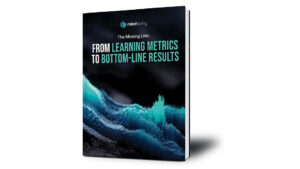
In the modern business landscape, the significance of learning and development (L&D) is universally acknowledged as a catalyst for organizational success. However, proving these initiatives’ return on investment (ROI) has been an ongoing challenge for L&D professionals. This is where data analytics comes into play, revolutionizing how organizations measure their learning programs’ success and ROI.
Traditionally, the impact of L&D was assessed using simplistic measures such as course completion rates or attendee satisfaction. While these metrics provide some insights, they fall short of demonstrating how L&D initiatives contribute to an organization’s strategic goals and bottom line. With its ability to process and analyze large volumes of complex data, data analytics offers a more nuanced and impactful approach.
Tailored Learning Experiences
Data analytics enables the creation of tailored learning experiences by analyzing individual learner’s performance, preferences, and learning patterns. This personalized approach enhances learner engagement and ensures that the training is aligned with the individual’s role and the organization’s objectives. By tracking improvements in job performance post-training, businesses can directly correlate learning interventions with enhanced productivity and efficiency.
Predictive Analytics
Predictive analytics is a game-changer in L&D. By analyzing historical data, organizations can predict future trends and skills that will be in demand. This foresight allows for the development of proactive training programs that prepare employees for future challenges, ensuring that the workforce remains agile and competitive.
Measuring Impact Beyond Traditional Learning Environments
One of the most significant advantages of data analytics is its ability to measure the impact of L&D beyond traditional learning environments. By integrating L&D data with other business metrics, organizations can assess how training programs influence key performance indicators such as sales growth, customer satisfaction, and employee retention. This linkage provides tangible evidence of the ROI of learning initiatives.
Continuous Improvement
Data analytics facilitates a continuous improvement model in L&D. By consistently analyzing the effectiveness of training programs, organizations can make informed decisions on how to optimize their L&D strategies. This ongoing process ensures that training remains relevant, effective, and aligned with evolving business goals.
However, harnessing the full potential of data analytics in L&D requires expertise and experience in both data science and instructional design. This is where engaging a specialized firm like MindSpring becomes invaluable. With our team of experts in data analytics and learning solutions, we can help your organization transform its L&D initiatives into strategic assets.
Our approach involves a deep understanding of your organization’s unique needs and goals, coupled with a data-driven methodology to design, implement, and evaluate learning programs. Whether it’s through sophisticated data modeling, insightful analytics, or impactful learning solutions, we are equipped to help your organization realize the full ROI of its learning and development efforts.
As the demand for measurable business outcomes from L&D initiatives grows, the role of data analytics becomes increasingly critical. It’s an exciting era for learning and development professionals. With the right partner, like MindSpring, your organization can not only measure but also maximize the success of its learning initiatives. Engage with us today to embark on a journey of transformative learning and development, backed by the power of data analytics.


